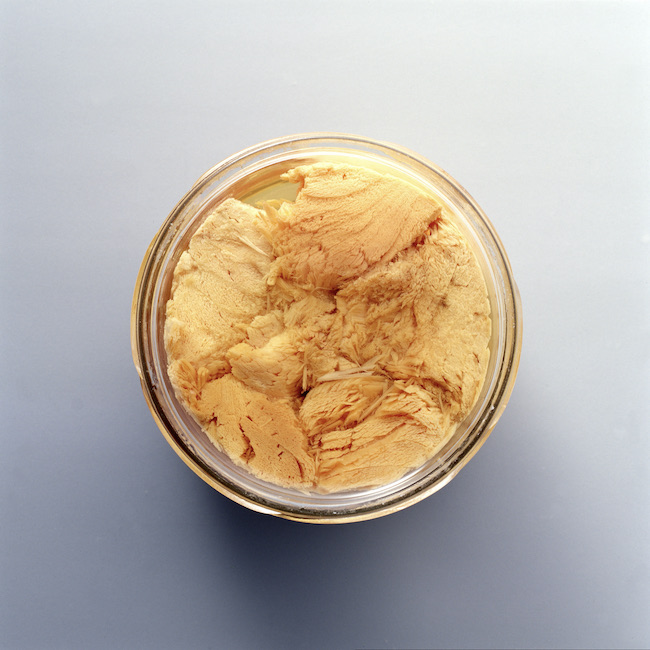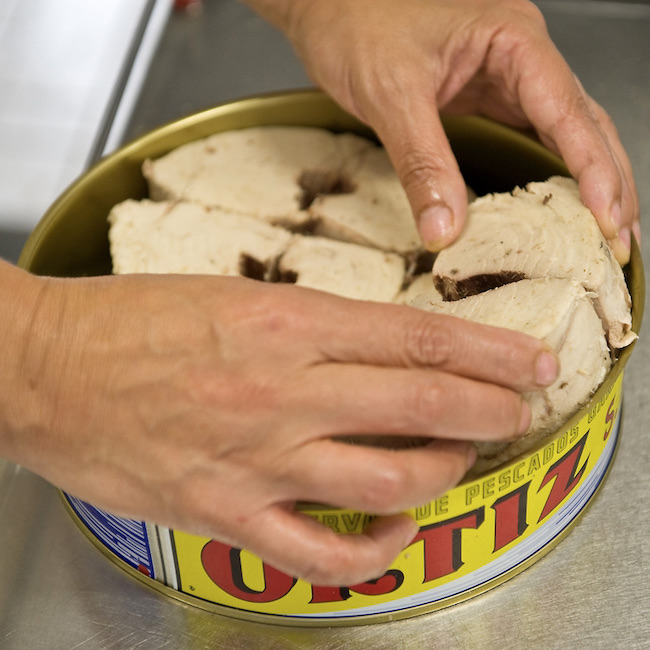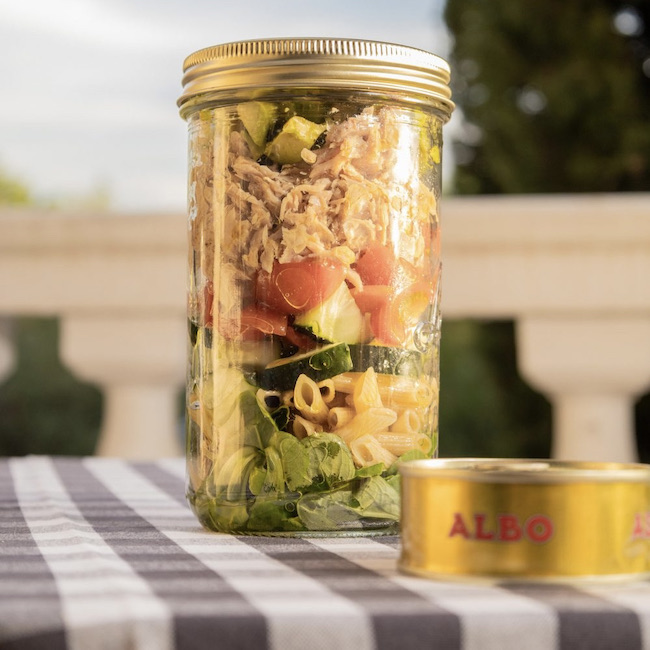.png.transform/rendition-xs/image_image%20(1).png)
'Bonito del Norte': the Most Delicious Canned Food
Every July, the 'costera' takes place in the Cantabrian Sea: this is the time of year when the species Thunnus alalunga is fished in the north of Spain, the raw material for one of Spain's most prized canned products
Between June and September, northern Spain becomes a paradise and a place to escape the heat, due to its green landscapes and moderate temperatures. The area's not just for tourists! Species such as the Thunnus alalunga (albacore tuna, known by locals as bonito del norte) also visit the Cantabrian Sea in summer and come close to the shores, where fishermen catch them. The fishermen use traditional fishing gear, which is essential for the fish to be enjoyed at its best.
One of the methods for catching this fish is to use pelagic drift nets, which have a cone-shaped body attached to a bag with lateral wings. It's larger than a trawl net. Once the bonito is detected, the net is deployed with a wide mouth that allows the fish to enter the bottom of the bag. Another approach is the purse seine net, which allows fishermen to catch a school of fish once it has been identified.

However, the most traditional fishing approach is to use a hook and live bait. "This fishing formula is much more respectful of the fish, as they don't suffer when they're caught. This improves the bonito's texture and makes it more tender as the fish does not undergo the same stress," explains Cécile Bourragué, Marketing Manager at Conservas Ortiz. This family company, based in the Basque town of Ondarroa (Biscay), has been canning bonito del norte since 1891. This is one of the best ways to enjoy this fish if you can't eat it fresh while spending the summer in northern Spain's cool climate. "This method of artisanal fishing, which is used in the Cantabrian Sea, forces canneries like us to turn away tons of product, but it allows us to protect the seabed somewhat and remain committed to sustainability."
In the beginning, it was all in escabeche (brine). "The company began producing bonito del norte in escabeche as a preservation method. When modern canning was invented, we started selling bonito del norte in its natural state or in oil, which is how it is most commonly consumed nowadays," says Bourragué.

The meticulous canning process
Conservas Albo, based in Vigo (Galicia) and founded in 1869, is another company that maintains the tradition of canned bonito del norte as a traditional art. As official suppliers to the Vatican and Spain's royal family, they are also committed to fishing "by rod, one by one, and always in season," according to Katerina Varenkow, the brand's Marketing Director. Varenkow sums up the production method for canned bonito del norte. "The fish arrives either fresh or frozen when it comes out of the sea, depending on the canned product we're going to produce. It's cooked in salt water and cleaned in four stages to ensure that only the fish loin is canned (the rest of the fish is vacuum-packed and sold to other markets). Then Spanish olive oil is added, the can is closed, and an autoclave is used for sterilization and hermetic sealing. When the fish is naturally preserved, it's done in exactly the same way but no olive oil is added to the cans.
"Other" tuna vs. albacore tuna AKA ‘bonito del norte’
Not all tuna is bonito del norte. According to Bourragué, from Conservas Ortiz, to be sure that it's albacore, it's important to check the can to ensure that the species used is Thunnus alalunga. "This species is also known as white tuna and must be distinguished from light tuna (atún claro), which is of inferior quality." Both Albo and Ortiz, together with other Spanish canning companies, export bonito del norte to different countries around the world. This Spanish delicacy can be found in the United States, European countries, Central and South America.... "Canned bonito del norte from Spain is synonymous with quality. The fishing method, the processing, the packaging... Everything influences its perception as a gourmet product and it's also a commodity because of the possibilities it offers to be consumed on the spot without the need to prepare much," says Bourragué. Whether you eat it from a can or a jar, bonito del norte is a meal in itself. "It can be eaten for breakfast, providing protein with high nutritional value, such as toast with tuna and avocado. It can also be served as the typical appetizer that Spaniards love: bonito, olives, potato chips, and vermouth, before lunch. It can also be added to pasta, salad, a sandwich, or an empanada. And, finally, it's great idea for a light dinner, on its own or with salted crackers, for example," says Varenkow.

Every can is a gem; the quality doesn't decline over time but, rather, improves. "Canning allows products to last for many years. There are even people who are making their own cellars with bonito del norte, storing cans from different years," says Bourragué. More than a product, it's a treasure... that comes from northern Spain to be exact.
Author: Javier Sánchez/ @ICEX

